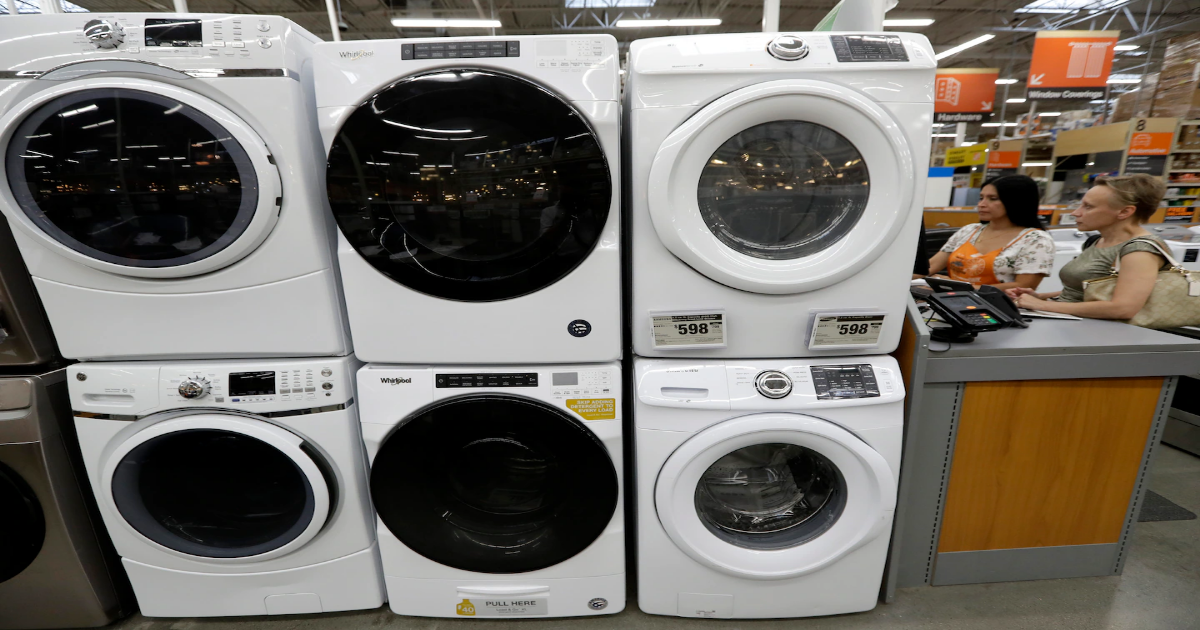The U.S. economy shrank in the first three months of 2025, contracting by an annualized rate of 0.3 percent, a stark reversal after nearly three years of solid growth, as tariff-related uncertainty upended spending patterns and raised fears of an impending recession.
The new report on gross domestic product, released by the Bureau of Economic Analysis on Wednesday morning, showed the first deceleration the U.S. economy since the pandemic-fueled, supply-chain woes of early 2022.
This economic slowdown came primarily from a dramatic increase in imports, as well as a drop in government spending. Consumer spending growth also slowed, as Americans hit the brakes on unnecessary purchases.
“Growth has simply vanished,” Chris Rupkey, chief economist at Fwdbonds, a financial research firm, wrote in a note to clients after the report’s release. “Maybe some of this negativity is due to a rush to bring in imports before the tariffs go up, but there is simply no way for policy advisors to sugar-coat this.”
Although economists generally agreed that growth has petered out this year, their predictions ahead of the GDP report varied wildly: The Federal Reserve Bank of Atlanta’s economic growth model was forecasting a 1.5 percent contraction in the first quarter, while the New York Fed’s version was predicting 2.6 percent growth. Most economists’ forecasts fell somewhere in between, though large swings in trade, business inventories and consumer spending have made it particularly tough to gauge the state of the economy.
GDP, the sum of all goods and services produced in the country, is the broadest measure of the economy.
“Tariffs have really changed the economic picture, not just for now but also for future quarters,” said Tara Sinclair, director of the Center for Economic Research at George Washington University. “There’s so much uncertainty, but we know people have shifted their consumption and bought a whole bunch of new imports, making a clear choice in preparation for the tariffs.”
Families and businesses rushed to buy foreign-made goods, including cars, electronics, clothing and furniture, ahead of the Trump administration’s tariffs, which largely went into effect this month. As a result, the United States imported nearly twice as many goods as it exported in March.
The trade deficit — the difference between incoming and outgoing goods — is the widest it has ever been, which is expected to be a significant drag on economic growth. Sales of American-made goods to other countries help bolster GDP, while purchases of foreign-made products count against it.
Those large spending shifts are further muddling the economic picture at a time when there’s already little clarity on what comes next. The Trump administration’s sweeping new tariffs — which include a 10 percent tax on all imports and up to 145 percent on Chinese goods — have raised concerns that inflation may worsen in coming months.
The confusion surrounding GDP — and the lack of clarity from the latest report — reinforces the Federal Reserve’s plans to keep interest rates on hold for the foreseeable future. Although it cut interest rates three times late last year, as inflation started to ease, it has held off on further reduction despite pressure from the president.
“The level of the tariff increases announced so far is significantly larger than anticipated,” Fed Chair Jerome H. Powell said this month at the Economic Club of Chicago. “The same is likely to be true of the economic effects, which will include higher inflation and slower growth.”
Perhaps the largest wild card, economists say, is how Americans will respond in the months to come. Consumer spending, which makes up nearly 70 percent of GDP, has been driving much of the economy’s recent growth. But surveys show many are worried about worsening inflation and unemployment, with consumer confidence plunging to its lowest level since May 2020, according to data released by the Conference Board this week.
“Consumers say they are very, very worried, at levels you’d typically see in recessions,” said Jonathan Millar, director of U.S. economics research at Barclays. “But the thing is, spending data still looks pretty decent, even though it doesn’t represent higher production or confidence in the economy. It’s just because everybody rushed out to bring stuff across the border before tariffs hit.”
There are also signs that Americans are starting to pull back on leisure, travel and dining out.
Carmine’s, a chain of family-style Italian restaurants around the country, is seeing an increase in customers, as cash-strapped families and businesses eschew pricier options, said Jeffrey Bank, CEO of parent company Alicart Restaurant Group. Even though they are booking parties, it’s clear they are feeling jittery, he said: For the first time, many are asking about the company’s cancellation policies before signing contracts.
“People are nervous: Will there be a recession? Will I lose my job? Is my 401(k) up, down or sideways? They’re trading down from their expensive steakhouse and coming to us,” he said. “We saw it during the financial crisis, and we’re seeing it now.”



